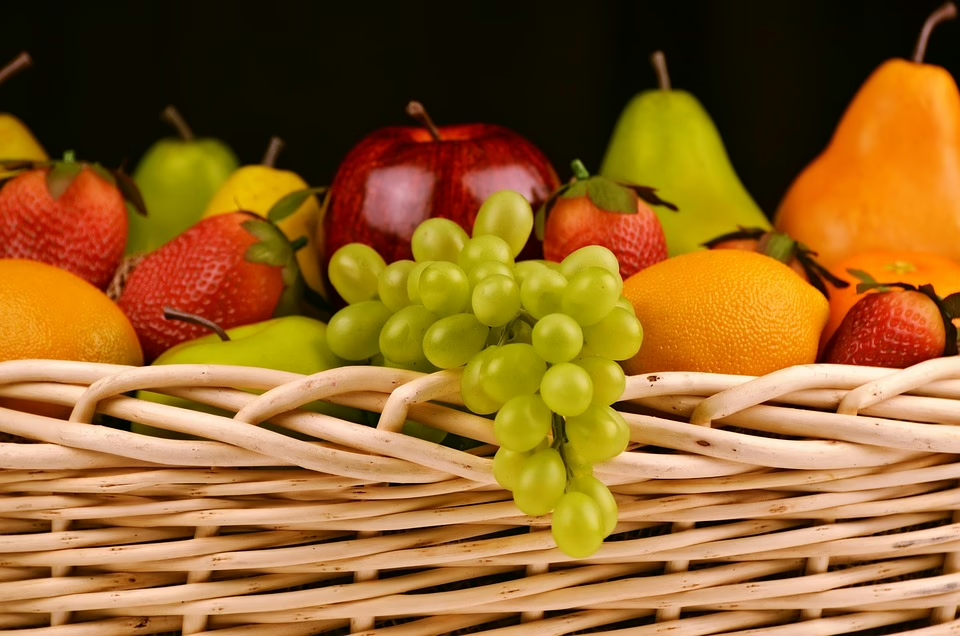Eat Well, Live Well: Local Nutrition-Focused Food Finds
In the fast-paced world we live in today, making healthy eating choices often takes a backseat to convenience. However, a growing movement advocates for a return to nutrition-focused food options that not only nourish our bodies but also enhance our quality of life. Eating well is not just about caloric intake; it’s about selecting food that contributes to our overall health and well-being. This article takes you on a journey through the vibrant landscape of local nutrition-focused food options, shedding light on how these choices can lead to a better, more health-conscious lifestyle.
The Importance of Nutrition in Modern Life
As we navigate our daily lives, it’s crucial to understand the role of nutrition in our overall health. Research consistently shows that what we consume directly impacts our physical and mental well-being. According to the World Health Organization, good nutrition is essential for a healthy life, particularly as we age. Poor dietary choices can lead to a multitude of health issues, including obesity, heart disease, diabetes, and certain cancers[^1].
Furthermore, the Covid-19 pandemic has brought renewed awareness to the importance of a strong immune system, which is significantly influenced by our dietary habits[^2]. Despite our busy lifestyles, taking the time to nourish our bodies with nutrient-dense foods is more critical than ever.
Understanding Local Food Movements
One of the primary ways to embrace nutrition-focused eating is through local food movements. These initiatives aim to promote the use of local produce, meat, dairy, and other food products. Buying local not only supports local economies but also reduces the carbon footprint associated with transporting food over long distances.
Benefits of Eating Local
- Seasonal Availability: Local food often aligns with the seasons, offering fresh produce that retains its nutritional value better than out-of-season imports.
- Support for Local Farmers: Purchasing from local farmers keeps money within the community and helps sustain agriculture.
- Reduced Environmental Impact: Locally sourced food travels shorter distances, which reduces greenhouse gas emissions.
- Enhanced Flavor: Freshly picked produce typically has better flavor and nutritional density compared to items harvested before ripeness for shipping.
Local Nutrition-Focused Food Finds
As we explore local nutrition-focused food finds, let’s focus on various options that individuals and families can incorporate into their daily diets. From farmers’ markets to community-supported agriculture (CSA) programs, there are plenty of ways to access high-quality, nutritious food right in your neighborhood.
Farmers’ Markets: A Nutritional Treasure Trove
Farmers’ markets are an excellent way to access fresh, local produce while enjoying a vibrant community atmosphere. Most cities host weekly markets where local farmers sell their goods directly to consumers. This not only fosters a sense of community but also allows consumers to ask questions about how their food is grown.
What to Look For:
- Seasonal Fruits and Vegetables: Always aim for seasonal options, which will have the best flavor and nutrition.
- Organic Options: Many farmers prioritize organic farming practices, which can lead to healthier produce.
- Locally Raised Protein: Look for vendors that sell grass-fed beef, free-range chicken, or sustainably sourced fish.
Community-Supported Agriculture (CSA)
Community-Supported Agriculture (CSA) programs offer a subscription-based model where customers receive a weekly or bi-weekly box of seasonal produce directly from a local farm. This arrangement fosters a closer connection between consumers and producers, promoting a deeper appreciation for local agriculture.
Benefits of Joining a CSA:
- Variety: Receive a diverse assortment of fruits and vegetables, often with recipe suggestions included.
- Freshness: CSA produce is often harvested the same day it’s delivered, ensuring maximum freshness.
- Supporting Sustainable Practices: Many CSAs implement sustainable farming methods that contribute to environmental health.
Nutritional Co-ops and Specialty Stores
In many urban areas, nutritional co-ops and specialty health food stores have sprung up, providing a wide array of options for health-conscious consumers. These stores often focus on organic, non-GMO, and health-focused products.
What to Look For:
- Bulk Items: Purchasing nuts, grains, and seeds in bulk can save money and reduce packaging waste.
- Supplements: Quality vitamins and supplements can support dietary needs, especially for those with lifestyle constraints.
- Prepared Foods: Many co-ops create fresh, healthful prepared meals that cater to various dietary preferences and restrictions.
Local Artisan Foods
In addition to fresh produce and meat, local artisan foods are a fantastic way to enhance your diet. This can include everything from homemade sauces and pickles to locally produced dairy items. These products often prioritize quality ingredients and traditional methods.
Examples of Local Artisan Foods:
- Fermented Products: Look for locally made sauerkraut, kimchi, or kombucha, all of which have probiotics that are beneficial for gut health.
- Nut Butters: Artisanal almond, peanut, or cashew butters can provide healthy fats and proteins.
- Baked Goods: Seek out local bakers who use whole grains and natural sweeteners for healthier options.
Recipes Featuring Local Nutritional Finds
To illustrate how incorporating local nutrition-focused food can transform meals, let’s explore a few simple recipes that capitalize on these ingredients.
Seasonal Vegetable Stir-Fry
Ingredients:
- 2 cups of seasonal mixed vegetables (e.g., bell peppers, zucchini, carrots)
- 1 cup of locally sourced tofu or protein of choice
- 2 tablespoons of local honey or maple syrup
- 2 tablespoons of soy sauce or tamari
- 1 tablespoon of sesame oil
- Optional: sesame seeds for garnish
Instructions:
- Heat the sesame oil in a large pan over medium heat.
- Add the mixed vegetables and stir-fry for about 5–7 minutes until tender.
- In another pan, cook the tofu until golden brown. Add to the vegetables.
- Drizzle the honey/maple syrup and soy sauce over the stir-fry. Mix well.
- Serve hot, garnished with sesame seeds.
Farmer’s Market Salad
Ingredients:
- 4 cups of mixed greens (from a local farms)
- 1 cup of assorted cherry tomatoes, halved
- 1 cucumber, diced
- ¼ cup of feta cheese, crumbled
- 2 tablespoons of quality local olive oil
- 1 tablespoon of balsamic vinegar
- Salt and pepper to taste
Instructions:
- In a large bowl, combine the mixed greens, cherry tomatoes, cucumber, and feta cheese.
- Whisk together the olive oil and balsamic vinegar, and drizzle over the salad.
- Season with salt and pepper, then toss gently and serve.
Homemade Fruit Jam with Local Berries
Ingredients:
- 2 cups of fresh local berries (strawberries, blueberries, etc.)
- 1 cup of local honey
- 1 tablespoon of lemon juice
- 1–2 teaspoons of pectin (optional)
Instructions:
- In a saucepan over medium heat, combine the berries and honey. Cook until the berries break down, about 10 minutes.
- Stir in the lemon juice and pectin if using, and continue to cook for an additional 5–10 minutes until it thickens.
- Pour the jam into sterilized jars and let cool before sealing.
Conclusion: Making Conscious Choices for a Healthier Future
The journey toward eating well is not just a personal endeavor; it’s a community effort that fosters health, sustainability, and local economies. By choosing local nutrition-focused food finds, we can make informed decisions that positively impact our health, our community, and the environment.
Eating well goes beyond simply choosing healthy foods; it encompasses understanding the source of our food and its journey. By engaging with local food movements, supporting farmers, and incorporating seasonal produce into our meals, we transform our relationship with food from one of convenience to one of mindfulness and connection.
As individuals, our choices matter. By making small changes and opting for local, nutrient-dense foods, we can pave the way for a healthier lifestyle. So next time you venture out, think locally, eat well, and live well.
Footnotes
[^1]: World Health Organization. (n.d.). Nutrition. Retrieved from WHO
[^2]: The Lancet. (2020). The COVID-19 pandemic and its impact on nutrition. Retrieved from The Lancet


























Add Comment